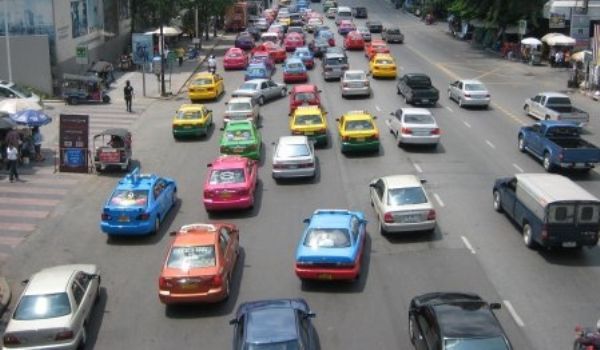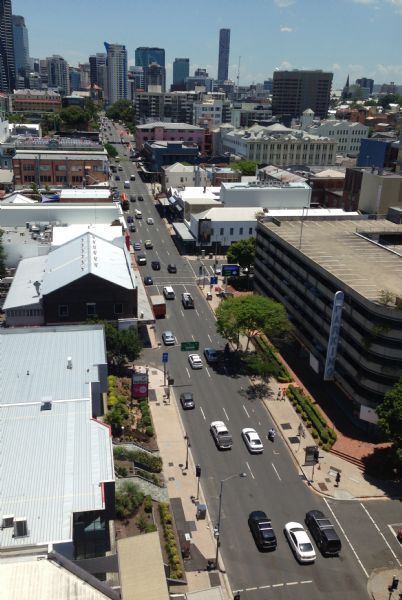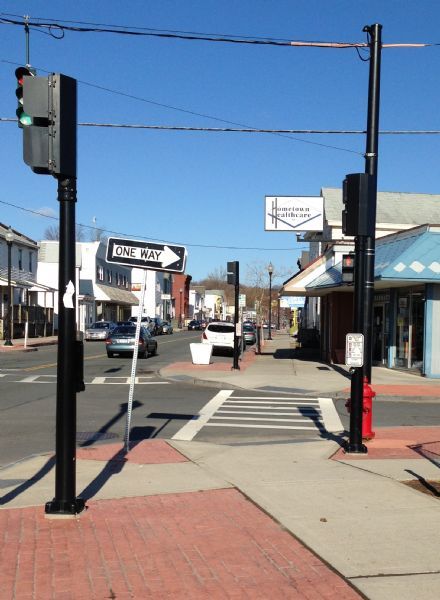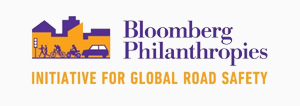





One Way Network
reduce congestion problems in city centres create access-only streets (usually for access to residential uses).
Reduced pedestrian crashes (pedestrians only need to look for traffic in one direction, and there are more orderly gaps in traffic). Reduced head-on and intersection crashes. Can allow better traffic signal timing.
Because speeds can increase on one-way networks, traffic calming measures may be required (especially if the lanes are wide). Before a network is made one-way, traffic circulation in the area surrounding the network must be considered. Converting a network to one-way can be costly as it may involve rebuilding traffic signals, repainting linemarking and replacing and adding signage. In the early stage of conversion, pedestrians may look in the wrong traffic direction when crossing roads.
Treatment Summary
25-40% |
Case Studies
Related Images

A one way road in Bangkok, Thailand. Image credit: John Fletcher 
One way urban network, Brisbane, Australia. Image credit: Unknown 
One-way residential street in USA. Image Credit: iRAP










